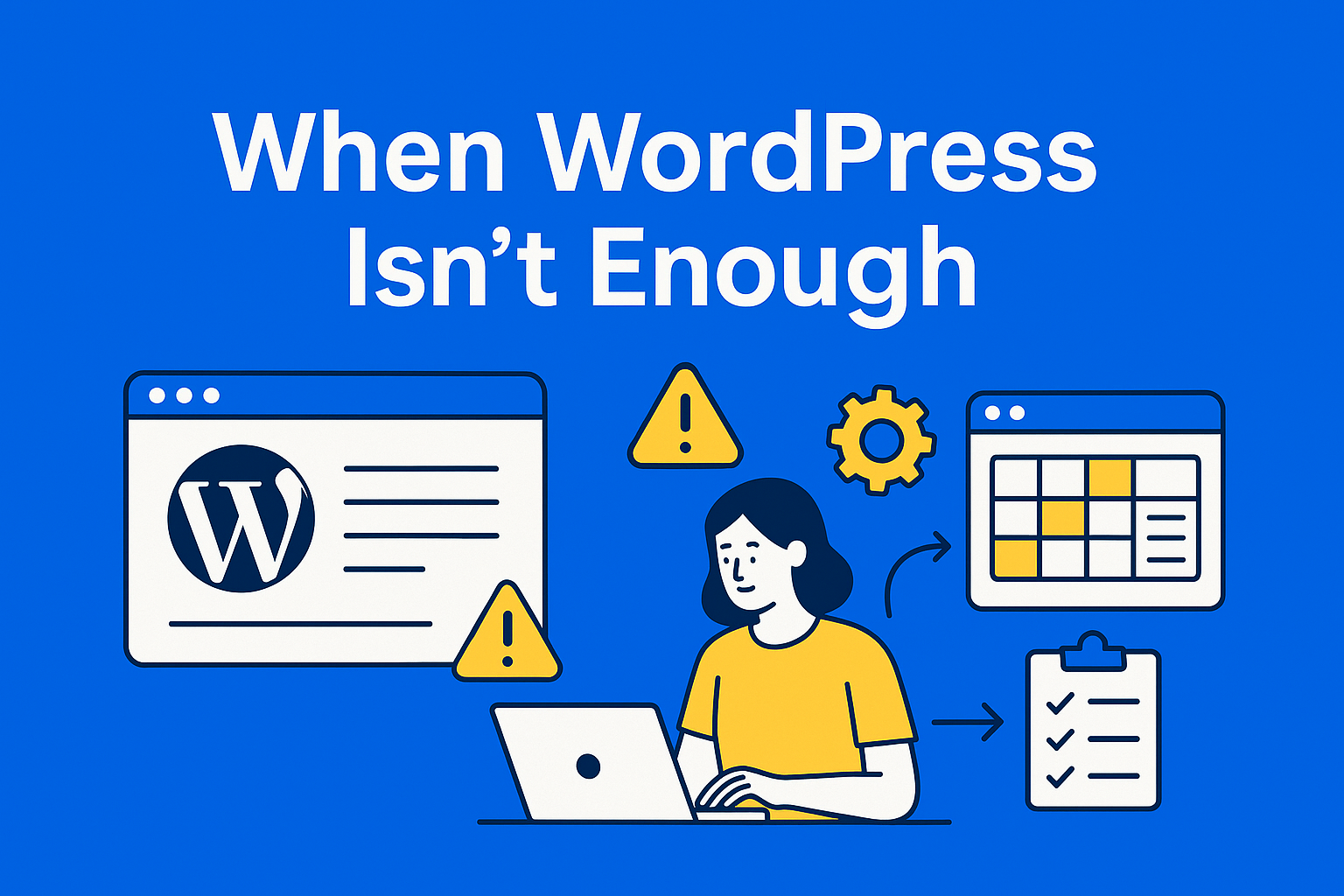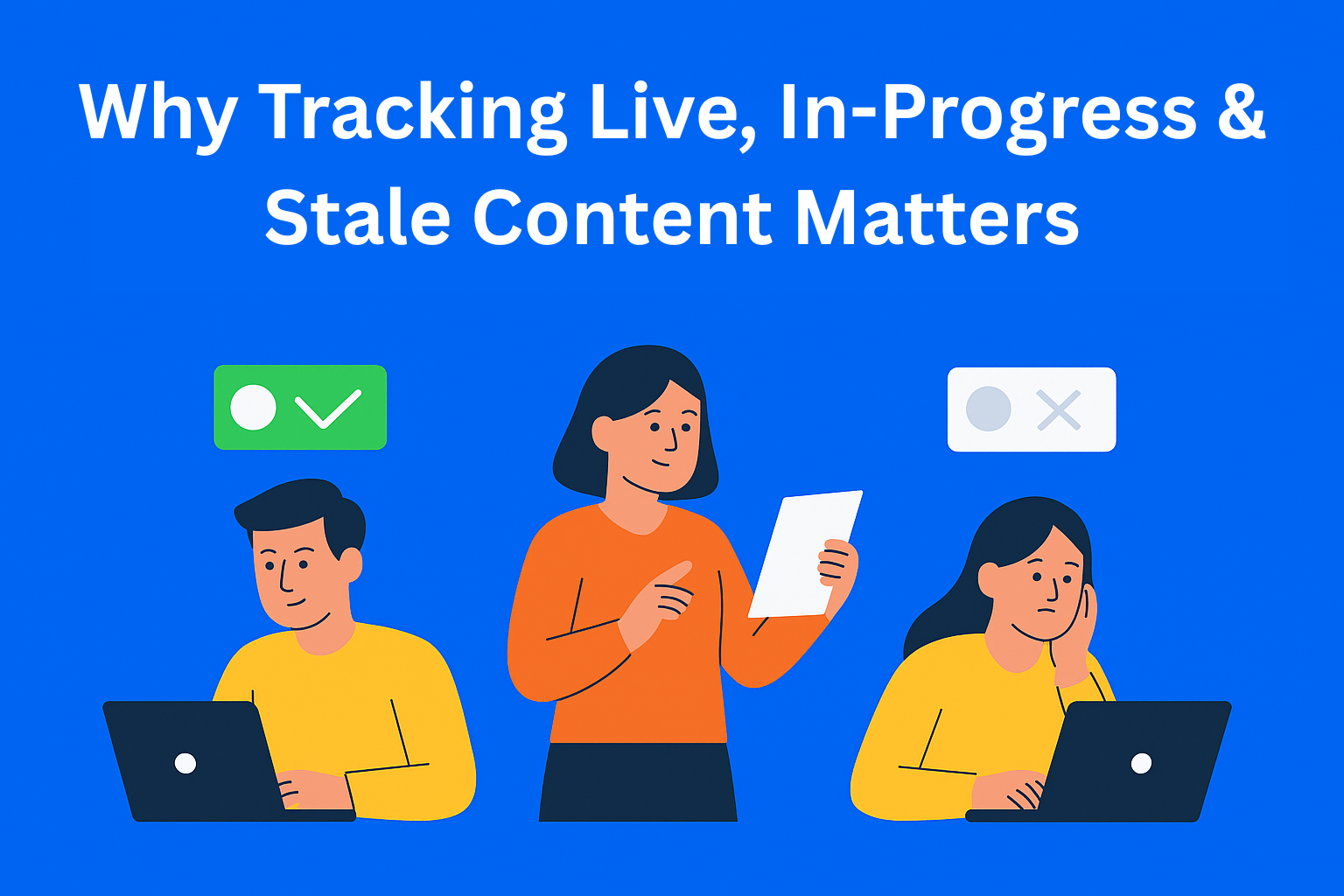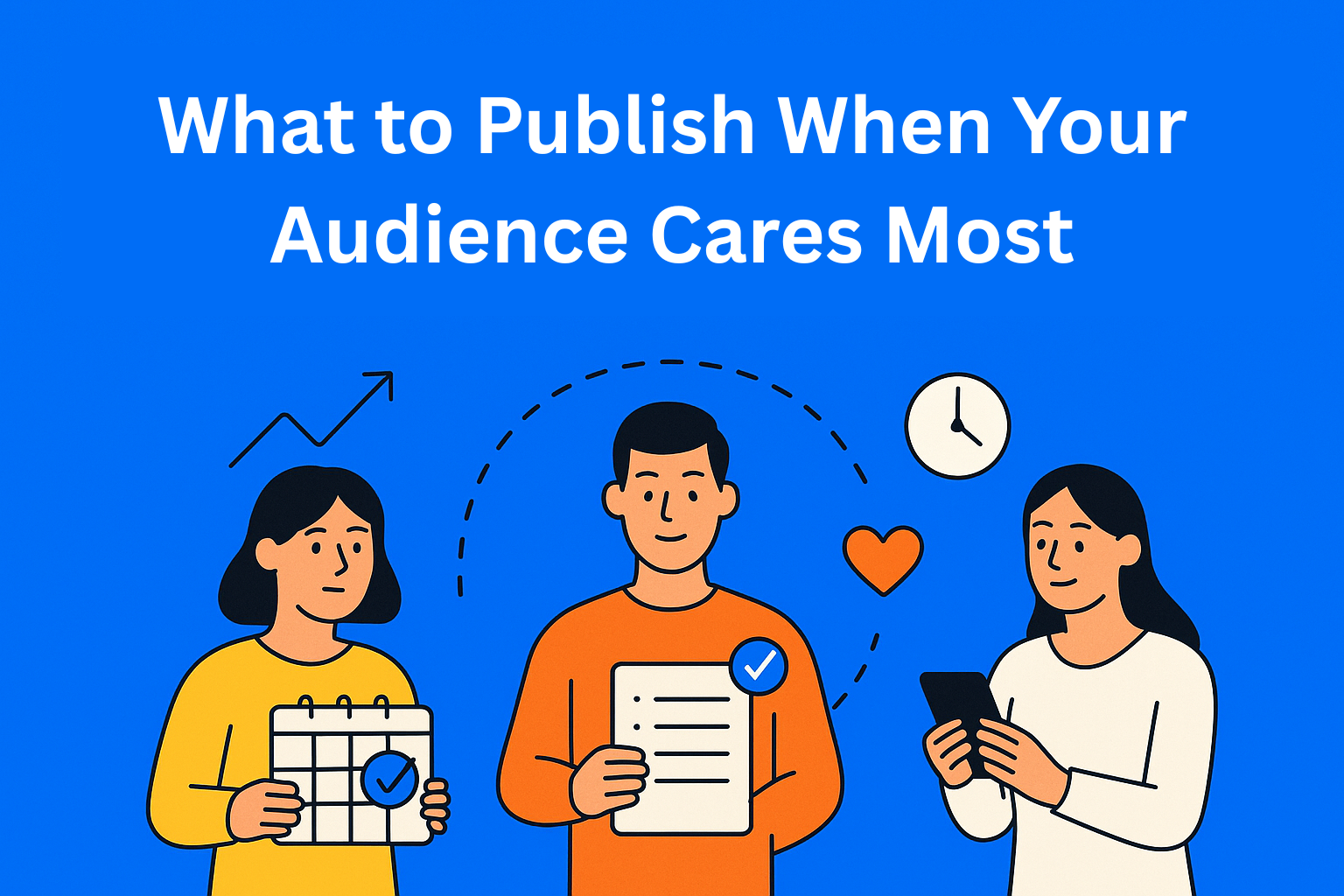When WordPress Isn’t Enough: Smarter Alternatives for Scaling ContentOps
WordPress is great for publishing, but content teams often need more. This post explores where WordPress shines, where it struggles, and how tools like EasyContent can fill the gaps with better workflows, collaboration, and structure-while still integrating with WordPress.

If you’ve spent any time managing content online, you’ve probably crossed paths with WordPress. With over 40% of the web powered by it, WordPress is, by far, the most popular content management system (CMS) in the world. It’s open-source, flexible, and supported by a massive community of developers and plugins. For many organizations, it’s the natural starting point for building a content presence.
But as your content operations (ContentOps) mature, you get more writers, editors, reviewers, deadlines, workflows, and analytics - WordPress can start to show its cracks.
This article isn’t about choosing sides. WordPress has its strengths, and for many scenarios, it’s the right tool. But if you're trying to scale a content program, especially across a distributed team, understanding where WordPress shines and where it needs backup can save you time, stress, and missed deadlines.
Key Takeaways
- WordPress works best for smaller teams - It's ideal for solo creators or basic publishing workflows.
- Scaling exposes WordPress limitations - Lack of built-in workflows, collaboration, and reporting becomes a bottleneck.
- Workflow and version control suffer - Most advanced features require plugins or external tools.
- EasyContent adds a dedicated ContentOps layer - It brings structure, collaboration, and oversight to content production.
- Use EasyContent + WordPress for the best of both - Plan and manage in EasyContent, publish in WordPress seamlessly.
- Watch for signs it’s time to scale - Growing teams, complex workflows, and missed deadlines indicate WordPress alone isn’t enough.
- ContentOps platforms reduce plugin dependency - Fewer plugins = fewer crashes, updates, and conflicts.
- Content quality comes from a clear process - A CMS alone won’t scale strategy, deadlines, or team coordination.
The Value of WordPress in ContentOps
For small teams or solo creators, WordPress offers everything you need to publish online. You can start a blog, build a website, or launch a digital magazine without writing a line of code. The Gutenberg block editor allows for relatively smooth content creation, and with plugins like Yoast SEO or WP Scheduled Posts, you can enhance functionality without hiring a developer.
From a ContentOps perspective, WordPress does offer some light project management features, especially with plugins. It’s also affordable, which makes it an easy sell for startups and small businesses.
In short, WordPress works well when:
- Content is created and published by a small team.
- Workflow complexity is low.
- You want to manage everything from within the CMS.
- You’re willing to maintain your plugin ecosystem and updates.
But content operations at scale look very different.
When WordPress Starts to Struggle
As teams grow and content pipelines become more complex, the limitations of WordPress become more apparent. Here are some of the most common operational pain points:
1. Workflow Management is an Afterthought
Most content teams work with multiple stakeholders - writers, editors, subject-matter experts, marketers, and clients. Managing these roles and responsibilities in WordPress usually requires custom user roles or third-party plugins, and even then, it’s rarely elegant.
Tracking content through stages like "In Progress," "Needs Review," "Approved," and "Scheduled" often falls back on spreadsheets or manual communication in Slack or email. That’s not scalable.
2. Lack of Built-In Collaboration Features
Content creation is rarely a solo act. Teams need the ability to comment, suggest edits, assign tasks, and communicate within the platform. WordPress doesn’t support this natively. You’ll need to bolt on plugins, connect tools like Google Docs, or rely on external collaboration software, all of which fragment the process and introduce version control issues.
3. Visibility and Reporting Gaps
ContentOps depends on visibility: What’s in the pipeline? Who’s late? What content’s performing? WordPress doesn’t offer native reporting tools to answer these questions. Sure, you can integrate with Google Analytics and use third-party dashboard tools, but there’s no built-in way to view your editorial progress or content team performance.
4. Plugin Overload
WordPress’s plugin ecosystem is a blessing and a curse. Need something? There’s probably a plugin for it. But relying on a dozen plugins for collaboration, SEO, scheduling, and workflow management can make your site fragile. Plugins break, conflict, and need constant updates, especially when WordPress rolls out a major version.
5. Not Built for Multi-Channel Planning
Modern content operations don’t just publish to one platform. Content gets reused across email newsletters, social media, paid ads, and internal knowledge bases. WordPress is primarily built for on-site publishing. Managing an omnichannel strategy from within WordPress requires extensive customization or external tools.
When to Start Looking Beyond WordPress
As your content process matures, you’ll start to feel these limitations. The key signals to look for include:
- You’re managing a content team of 5+ people with different roles.
- You’re juggling multiple projects and deadlines.
- You rely on spreadsheets or external tools to track content progress.
- You need visibility into team performance or the content lifecycle.
- You’re spending more time managing plugins than creating content.
This is where dedicated content operations platforms enter the picture.
Enter the ContentOps Layer: Where EasyContent Fits In
Tools like EasyContent were built specifically to manage the messy middle of content production, the part between ideation and publication.
Instead of trying to force a CMS to do everything, EasyContent adds a layer on top of your ContentOps that’s purpose-built for managing teams, deadlines, and editorial workflows.
Here’s where it adds the most value:
- Custom Workflows: Set up multi-stage workflows tailored to your team’s process, from briefs and drafts to editorial review and client approval.
- Collaboration Tools: Leave comments, assign tasks, and communicate within each piece of content - no more emailing Google Docs back and forth.
- Deadlines and Notifications: Automatically assign due dates and reminders so nothing slips through the cracks.
- Editorial Calendar: View and manage your entire pipeline in a drag-and-drop calendar view.
- Content Briefs and Templates: Standardize how content is created to maintain quality across contributors.
And if you still want to use WordPress for final publication? No problem.
EasyContent offers a WordPress integration that lets you sync approved content directly into your WordPress site. You get the structure and collaboration of a ContentOps platform, and the publishing flexibility of WordPress - all without copy-pasting.
When You Should Still Use WordPress Alone
To be clear, there are still plenty of situations where WordPress is all you need:
- You’re a solo blogger or freelancer.
- You publish sporadically or work with a very small team.
- You don’t have complex workflows or review processes.
- You’re comfortable managing plugins and updates.
In these cases, WordPress provides more than enough value, and adding another tool might be unnecessary.
But if your team is growing, or your content ambitions are, it makes sense to bring in a platform that was built for operations, not just publishing.
Final Thoughts
As content teams evolve, the tools we use need to evolve with us. WordPress remains a powerful CMS, but it was never designed to be a content operations platform.
If you’re starting to feel friction in your content process, it might be time to look at adding a layer that helps you scale. Whether you’re managing a growing editorial team, planning complex campaigns, or simply tired of countless plugins, purpose-built platforms like EasyContent can bring order, clarity, and speed to your operations.
Try out our 2-weeks free trial and see if it fits your needs.






